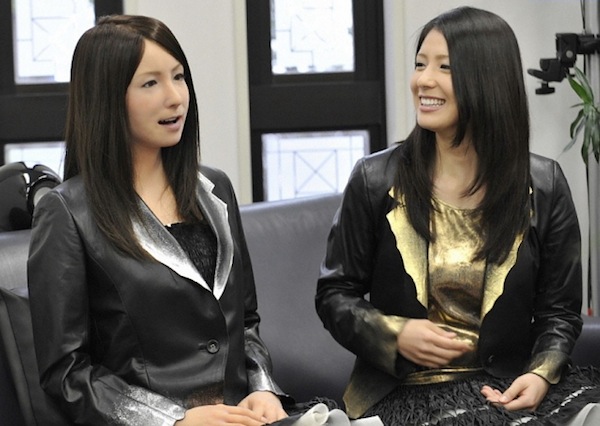This week, I had the opportunity to chat with the CEO of PAH Relay, Brian Collins.

1. Is the company Deaf-owned (meaning is the CEO, founder, or such Deaf)?
To answer this first question, I the CEO, am not Deaf. However, I would like to also share that I am very much a stakeholder in the Deaf community, as is our COO, due to the fact that we are both CODA’s who have grown up and continue to be active in the Deaf community.
Additionally, our Board of Managers consists of six individuals, the CEO, CFO, COO and three of our largest investors who are Deaf. More specifically the Board of Managers is made up of three Deaf individuals, two CODA’s and one hearing individual. With that said, I would consider PAH Relay Deaf owned/managed.
2. How many Deaf employees are working for the company and what percentage do they make up of your work force?
At this point in time we have only three employees on the Operations side of our organization, the CEO, CFO and COO. Although it is our intention to employ Deaf individuals when the opportunity presents itself, we simply are still in the start up phases of our organization. We want to ensure that once we do expand our team that we are doing so for the right reasons and are able to sustain those positions for the long term.
3. Why did you come up with the idea to set up your own VRS?
I think it'll help both of us if I give you a quick background about myself. First of all, both of my parents are Deaf, so I am a CODA. I grew up in Indianapolis, Indiana and have always been involved in the Deaf world including Deaf organizations and Deaf clubs. In fact, I was the first Hearing student to attend Indianapolis School for the Deaf (ISD) in 1987. I loved the Deaf world so much that I convinced the superintendant of the Indiana School for the Deaf to allow me to attend ISD for one semester of my senior year. I completely immersed myself and chose to also stay in the dorm. After attending College for a few years I began working as a freelance interpreter and continued doing that for about 15 years. In addition to community work I also did some VRS work as well.
In my VRS work, I noticed that there was too much focus being placed on the technology side of the VRS industry and far too little focus on the consumers and interpreters that serve them. So I decided to do something about that and this led to the creation of PAH Relay.
4. When was PAH Relay established?
We started in February of 2008 and we processed our first call on October 31st, 2009. Trick or Treat!
5. What other services do PAH Relay offer?
We offer VCO, IP-relay (AIM or iChat), 10-digit number and 911, and of course VRS. We also recently released a new video softphone (video software) we call PAH MAX, you can download it for free through our website.
6. What about VRI?
At this time we do not provide VRI services. We want to ensure our energy is focused on providing the best Services possible and we will accomplish that by focusing on one thing at a time. We want to ensure we provide our consumers the best interpreters available all the while ensuring all of our Deaf consumers including you are happy with our interpreters before anything else. VRI may come later, we will have to wait and see for now.
7. Is PAH Relay certified by FCC?
Currently we are not, although we submitted our application to the FCC back in November of 2008. As most of us are aware the FCC has been extremely busy with investigations and reviewing petitions and the like, but they have shared with us that they do not have any further questions regarding our application. So that's good, at this point we will continue to be patient, while the FCC works through the other tasks on their plate. I'm not worried and believe it is just a matter of a little more time before we become an approved provider.
8. You did mention about wanting to focus on the Service instead of the technology. How are you doing that? Could you expand on that a little more please?
Absolutely! First of all, my philosophy is that a good rapport must be established between the interpreter and the consumer, this is the key to success. If the Deaf consumer and the Interpreter have established a rapport, the interpreter is better able to match terminology, register and personality while processing calls, which results in a much more effective call and in a much happier Deaf consumer. It doesn't matter if it is a VRS call, an assignment at a doctor's office, or interpreting at a wedding. As long as a rapport between the interpreter and the Deaf consumer can be established, everything else falls in to place. Let's use my mother as an example. When my mother makes a VRS call and is put on hold, typically the interpreter will let her know they need to put up the privacy screen. As result, my mother feels disconnected from the interpreter and is unable to establish a rapport with them. This leads to her being unsure of whether or not her call is being processed well and she is ultimately left not knowing. To her this also feels cold and not Deaf friendly, it is as if she is once again talking through a machine, and who likes that? From the feedback we have, the Deaf community does not like this and I can tell you that interpreters do not like it either. That's not how interpreting has been or should be done. Instead, the Deaf consumer and interpreter should be able to take the time to acknowledge each other and build up a rapport. This ultimately makes interpreting and processing calls so much easier and much quicker resulting in a cost savings to the TRS Fund. All in all, it’s what the Deaf community and interpreters are already accustomed to and therefore a more natural process for everyone involved. So again, in my example with the video privacy screens being over used, if the Deaf consumer is put on hold by the interpreter, who is in control of the call? Shouldn’t it be the Deaf consumer who decides whether or not the interpreter uses the "Video Privacy" screen? It is also the Deaf consumer who can initiate small talk, within reason, and establish a rapport with the interpreter. Again our focus is on giving that control to our Deaf consumers, thereby making our Deaf consumers feel more comfortable while placing their calls. Rapport is the key; after all, we need to remember that VRS stands for Video Relay SERVICES. PAH Relay is providing those Services today, if the sole focus is Technology then we need to refer to this industry as the Video Relay Technology (VRT) industry... make sense? For PAH Relay, Customer Service is a high priority focus and will not be over-shadowed by technology.
9. Would there be any concerns among the interpreters working for PAH Relay and possible breaches with the Code of Ethics after establishing a rapport with a Deaf consumer?
Our interpreters are professionals who work in the Deaf community as interpreters as well as in VRS. All abide by a strict Code of Ethics and regard those with the highest of integrity. Interaction prior to, or after interpreting a VRS call is no different than what you would experience while in the community. For example, when you go to a doctor for an appointment you may find yourself asking the interpreter things like “Where are you from?” or “How did you learn ASL?” These are things that help to begin establishing a rapport between the Deaf consumer and the interpreter. You’ll notice answers are not as specific as giving an exact home address, rather the answers may be something like “I’m from Indiana”. General answers such as these are sufficient and go a long way in establishing a rapport between the Deaf consumer and interpreter. It is very easy to be friendly with each other while maintaining a sense of professionalism, all the while providing the best Service you can.
10. Can you explain the process of hiring interpreters to work for PAH Relay?
We pre-screen every interpreter by looking at resumes, credentials, experience and conducting background checks. We are looking for interpreters who are not only highly qualified to interpret, but also interpreters who are and continue to be involved within the Deaf community. We are not interested in interpreters who look at this as just a job or are only in it for the money. PAH Relay encourages all of our interpreters to remain involved with the Deaf communities whether that is in interpreting outside of VRS or participating in various Deaf organizations. Since there is always room for improvement, we also expect our interpreters to participate in interpreting workshops annually. The interpreting industry is always changing and we want our interpreters to be at the top of their game regardless of those changes.
Lastly, we encourage as much Deaf community feedback as possible. At the top of every page on our website you will find a button called “Meet your Interpreters!” If you click that button you will see we have a picture and a profile for nearly all of our interpreters. On each interpreter's profile, you can submit your feedback. This feedback may focus on strengths or weaknesses, yet we view it as constructive, and a way for us to improve the Service we provide to our Deaf consumers. All feedback comes to me and I will personally see to it that every interpreter gets their feedback, and together we will do whatever is necessary and appropriate to continue providing the very best VRS services possible.
11. Providing feedback and Posting the interpreter's bio and picture, aren't there any privacy or legal issues relating to that?
The way we see it is, if an interpreter is not comfortable, then why is he/she an interpreter in the first place? Being an interpreter requires not only great communications skills, but skills in interacting among people. When an interpreter meets you for the first time they understand you will want to know more about them, this comes natural to them, since they already do this when interpreting in the community. Human interaction greatly improves the rapport between a Deaf consumer and the interpreter and is something we strive for. Additionally, this is how feedback is more openly shared among each other. Constructive feedback is how all interpreters understand what improvements or adjustments need to be made, and is very important to every PAH Relay video interpreter.
To date not one of our interpreters has had an issue with this, in fact they are excited to share who they are and what they are about and that is Serving the Deaf community well!
12. What do you want the Deaf community to know about VRS that they do not already?
It is vitally important that all Deaf consumers know that they own their calls. Their calls are not ours; the interpreter's job is to simply interpret your message to the Hearing caller with expertise. Being satisfied your call was interpreted well is no longer enough, confidence knowing your call was handled professionally and knowing you were represented well is what you should come to expect. It all comes down to being Served well and this is the ultimate goal at PAH Relay.
13. What is the biggest challenge for PAH Relay?
Probably, the competition, there are so many providers focusing on technology that it has become a challenge getting the SERVICE message out there. It seems we have been conditioned that in order to use a particular provider that you must first have their technology. At PAH Relay we do not see it that way, in fact we believe Technology and Service provision are two very different things and should be handled as such. We have chosen to focus on the Service aspect of this industry because interpreting and highly qualified interpreters are what we know best! PAH Relay is in the Video Relay SERVICES business.
14. What is the biggest challenge you foresee between the VRS industry and the FCC?
I believe that we, the Deaf community and providers, need quicker responses from the FCC on regulation and rule making. It can be very difficult to try and provide unique services that go above and beyond current expectations while waiting for the FCC to make decisions on various petitions.
Additionally, it would seem that separating what we currently call “VRS” in to two categories namely; VRS (Video Relay Service) and VRT (Video Relay Technology) would make sense. By separating VRS from VRT, the interoperability of all technology with all Service providers could be established. A great example of how this is already being done is with mobile phone devices and services. If you decided to buy a new phone (i.e. Blackberry, Samsung or Nokia), you can buy it and choose which service provider (i.e. AT&T, Verizon, T-Mobile or Sprint) you want to use with that phone. It should be the same with the Video Relay industry. You should not lose basic service needs such as your contacts or missed calls when you decide to change technology. Again, VRS is Video Relay SERVICES... Not Technology. I don't know about you, but I believe the “S” in VRS revolves more around the interpreting services provided and not so much the technology that we use to provide those interpreting services.
15. Do you have any plans to expand PAH Relay even more?
Well, I think we are doing very well actually. It's been only a year and a half and we already have 12 call centers in 8 states. There is at least one in Wisconsin, Michigan, New York, Illinois, California, Oregon, Indiana, and Georgia. We want to grow organically and that is done through Deaf customers placing their calls using our services. The only way we can expand is for our Deaf consumers to be so happy with our interpreters, and they way they are served, that they spread the good news of PAH Relay!
On behalf of the Deaf communities and myself, we would like to thank you for taking the time to explain your business and your philosophy. We truly appreciate it.

















